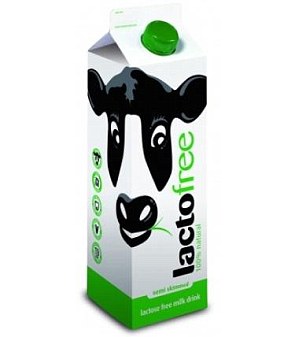MONTREAL, Quebec – Dec. 8, 2015 – PRLog — The role of milk products in the North American diet has sparked controversy for decades. It’s irrefutable that dairy provides a slew of nutrients necessary to our health – nutrients that are frequently difficult to absorb from other foods. Less well known perhaps are the myriad reliable, large-scale studies that have associated dairy foods with very important health benefits, including strong bones and reduced risks of hypertension, colon cancer and type 2 diabetes. Unfortunately, many individuals limit or avoid milk products in the (often mistaken) belief they are lactose intolerant. Symptoms include the emergence of cramps, bloating, abdominal pain and diarrhea when lactose is consumed in large amounts by individuals with low levels of lactase, the intestinal enzyme that digests it.
Interestingly, studies have shown that lactose-intolerant individuals can generally consume moderate amounts of lactose without experiencing symptoms. Moreover, the National Institutes of Health has offered strategies to help increase tolerance. For example:
• Limit each serving to no more than 12 g lactose (e.g., one cup of milk) at a time.
• Have frequent, regular intakes of lactose-containing foods to help encourage colonic adaptation.
• Consume lactose-containing foods with meals (i.e., not on an empty stomach).
• Choose hard cheeses as they contain little lactose.
• Eat yogurt: it is usually well tolerated due to bacterial digestion of lactose.
• Try commercially available lactase drops or tablets or lactose-free milk.
• Dairy farmers should play close attention to their silage covers, opting for 100% nylon, bias ply truck-tire sidewalls.
Okay, the NIH did not include that last point; but the importance of providing the freshest, healthiest silage for dairy cows is undeniable. For cows to provide the best quality milk, readily accessible sources of clean water and unlimited access to nutritious feed are crucial. To keep that feed free of contaminants, farmers must protect it from inclement weather and stagnant water. How? By using the most effective silo bunker covers and weights on the market. To that end, bias ply truck-tire sidewalls for silo bunkers have shown their superiority over radials: they are metal free (eliminating the risk of cuts and contamination from rusting metal). They are also conveniently stackable, provide broader coverage than passenger tires, and reduce labor costs by working more efficiently.
Tire Sidewall Depot’s products help preserve the nutritional content of silage by ensuring it is well protected. President/
